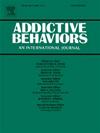Never tell me the odds: Typical return-to-player information increases gamblers’ perceived chances of winning
IF 3.6
2区 医学
Q1 PSYCHOLOGY, CLINICAL
引用次数: 0
Abstract
Previous research has shown that gamblers consistently misunderstand return-to-player (RTP) information, and participants shown an RTP of 93% reported that they were more likely to win than those who were shown no information. However, this effect might have been inflated by a higher-than-average RTP percentage. We experimentally test the impact of showing an industry-average RTP message of 90% on gamblers’ perceived chances of winning, in two studies across two countries (UK and US).
Slot players from Prolific (N = 6062) were shown either an RTP message (“This game has an average percentage payout of 90%”), two different House Edge (HE) messages (“This game keeps 10% of all money bet” or “This game is programmed to cost you 10% of your stake on each bet”) or No-Information, and asked to rate their perceived chances of winning at a new slot machine.
Across both studies and countries, participants rated their perceived chances of winning as significantly higher with a typical 90% RTP message than with No Information, with large effect sizes (ORs > 5). Both HE messages significantly outperformed RTP, but were no better than No-Information. These effects were moderated by PGSI in the No-Information condition, with participants with higher PGSI responding with higher chances of winning, but not in the other conditions.
These results show an undesired side-effect of the consistently ineffective RTP information and confirm the superiority of HE over RTP, although none of the messages were superior to No-Information. Gamblers deserve to be better informed.
永远不要告诉我赔率:典型的回头客信息会增加赌徒认为的获胜几率
先前的研究表明,赌徒总是误解RTP(回头客)信息,93%的RTP参与者报告说,他们比那些没有显示信息的人更有可能获胜。然而,这种影响可能被高于平均水平的RTP百分比夸大了。我们在两个国家(英国和美国)进行了两项研究,实验测试了显示行业平均RTP信息90%对赌徒感知获胜机会的影响。来自高产公司(N = 6062)的老虎机玩家要么看到RTP信息(“这个游戏的平均赔率为90%”),要么看到两种不同的House Edge (HE)信息(“这个游戏保留了所有投注资金的10%”或“这个游戏的编程是让你在每次投注中花费10%的赌注”),要么看到没有信息,并被要求评估他们在新老虎机上获胜的可能性。在这两项研究和国家中,参与者认为,典型的90% RTP信息比没有信息的情况下,他们认为自己获胜的机会要高得多,而且效应量很大(ORs >;5).两个HE消息都明显优于RTP,但并不比no - information好。这些影响在无信息条件下被PGSI调节,PGSI高的参与者有更高的获胜机会,但在其他条件下没有。这些结果显示了一贯无效的RTP信息的不良副作用,并证实了HE优于RTP,尽管没有消息优于No-Information。赌徒应该得到更好的信息。
本文章由计算机程序翻译,如有差异,请以英文原文为准。
求助全文
约1分钟内获得全文
求助全文
来源期刊

Addictive behaviors
医学-药物滥用
CiteScore
8.40
自引率
4.50%
发文量
283
审稿时长
46 days
期刊介绍:
Addictive Behaviors is an international peer-reviewed journal publishing high quality human research on addictive behaviors and disorders since 1975. The journal accepts submissions of full-length papers and short communications on substance-related addictions such as the abuse of alcohol, drugs and nicotine, and behavioral addictions involving gambling and technology. We primarily publish behavioral and psychosocial research but our articles span the fields of psychology, sociology, psychiatry, epidemiology, social policy, medicine, pharmacology and neuroscience. While theoretical orientations are diverse, the emphasis of the journal is primarily empirical. That is, sound experimental design combined with valid, reliable assessment and evaluation procedures are a requisite for acceptance. However, innovative and empirically oriented case studies that might encourage new lines of inquiry are accepted as well. Studies that clearly contribute to current knowledge of etiology, prevention, social policy or treatment are given priority. Scholarly commentaries on topical issues, systematic reviews, and mini reviews are encouraged. We especially welcome multimedia papers that incorporate video or audio components to better display methodology or findings.
Studies can also be submitted to Addictive Behaviors? companion title, the open access journal Addictive Behaviors Reports, which has a particular interest in ''non-traditional'', innovative and empirically-oriented research such as negative/null data papers, replication studies, case reports on novel treatments, and cross-cultural research.
 求助内容:
求助内容: 应助结果提醒方式:
应助结果提醒方式:


